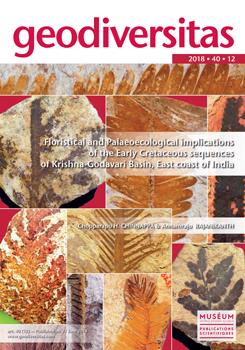The present paper describes a disarticulated skull of Allqokirus australisMarshall & Muizon, 1988, a basal sparassodont (Metatheria, Mammalia) from the early Palaeocene (c. 65 Ma.) of Tiupampa (Bolivia). The specimen includes the rostrum and palate with right premaxilla, both maxillae, left lacrimal, palatines and most upper teeth. The second largest element includes the frontals, the left squamosal, the parietals, the supraoccipital, the basisphenoid, the presphenoid, the alisphenoid, and part of the pterygoids. The nasals, basioccipital and exoccipitals are missing. Other elements are the left petrosal, the right jugal and squamosal, and both dentaries. The elements of the specimen allow for a good reconstruction of the skull, which is thoroughly described and compared to that of other sparassodonts and to the Tiupampa pucadelphyids, Pucadelphys and Andinodelphys. The dental morphology of Allqokirus australis is extremely similar to that of Patene simpsoni from the early Eocene of Itaboraí (Brazil) and presents distinct (although incipient) carnivorous adaptations. Furthermore, some characters of the ear region (e.g. medial process of the squamosal, deep groove for the internal carotid artery at the ventral apex of the petrosal) are also present in most other sparassodonts and in the pucadelphyids from the same locality. A parsimony analysis performed on the basis of a data matrix of 364 characters and 38 taxa placed Allqokirus in a sparassodont clade (the Mayulestidae) that also included Mayulestes and Patene. This family constitutes the sister group of all other sparassodonts. Our analysis also retrieved a large clade composed of the sparassodonts and the pucadelphyids, formally named Pucadelphyda n. superord. This superorder represents the large metatherian carnivorous radiation of the Tertiary of South America, which is first known at Tiupampa, and which started to diversify probably slightly earlier, during the late Cretacous in South America. So far, no representative of Pucadelphyda has been discovered in North America. At Tiupampa, Allqokirus and Mayulestes are the largest metatherians of the fauna and they fill the predaceous mammalian ecological niche. They are the earliest representatives of Sparassodonta, a successful metatherian carnivorous radiation which persisted in South America until the late Pliocene, i.e., during more than 63 Ma.
How to translate text using browser tools
23 August 2018
Allqokirus australis (Sparassodonta, Metatheria) from the early Palaeocene of Tiupampa (Bolivia) and the rise of the metatherian carnivorous radiation in South America
Christian de Muizon,
Sandrine Ladevèze,
Charlène Selva,
Robin Vignaud,
Florent Goussard
ACCESS THE FULL ARTICLE
It is not available for individual sale.
This article is only available to subscribers.
It is not available for individual sale.
It is not available for individual sale.

Geodiversitas
Vol. 40 • No. 3
September 2018
Vol. 40 • No. 3
September 2018
Bolivia
early Palaeocene
Metatheria
phylogeny
Sparassodonta




